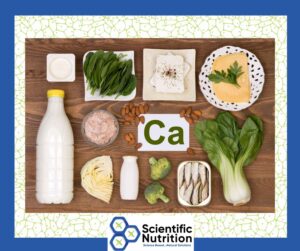What is the Sodium to Potassium ratio?
This is the most important ratio in your body so l want to break down “what and why” this balance matters so much. The Sodium to Potassium ratio (Na/K) is a measurement of your life energy and vitality.
A cellular look at the Sodium to Potassium vitality ratio on a Hair Mineral Analysis can give you answers to so many questions you may have about your symptoms so let’s break it down!
Why is sodium important to our cells?
Sodium is higher as an extracellular element that is essential in maintaining your mineralocorticoid levels that regulate salt and water balance as well as your blood pressure.
- It helps to pull or absorb nutrients, oxygen, etc.
- An elevated level on a hair test indicates stress, more so than the amount of salt in one’s diet.
- It reflects the secretion of the hormone aldosterone (which is a pro-inflammatory) hormone.
Why is potassium important to the cells?
Potassium is higher on the inside of the cells which is required for fluid balance, nerve, and muscle activity.
- It helps to push out waste, toxins, etc.
- It reflects glucocorticoid,(which are anti-inflammatory) hormone levels that regulate glucose or sugar metabolism. When low it means the body is dealing with excessive stress and weak adrenal glands. One would feel fatigued and may have low blood sugar.
- It regulates cortisol and cortisone (which are anti-inflammatory) hormones.
- When it is high in comparison to your sodium, it raises your sugar-raising hormones.
These are two of the minerals often mentioned in your 4 electrolytes with calcium and magnesium being the other two. The sodium and potassium are regulated by 2 adrenal hormones, aldosterone, and cortisol.
So why does the ratio of Na/K matter so much?
The Na/K ratio is intimately linked to your adrenal gland function. It manages the balance between aldosterone (mineralocorticoid/pro-inflammatory) and cortisone (glucocorticoid/anti-inflammatory) secretion. This ratio also regulates your cell’s electrical potential.
What can I see on a Hair Analysis?
So many clues can be seen in your hair analysis test results to help me design an individualized supplement and dietary recommendation to correct this imbalance and more. It often correlates to symptoms and gives me direction instead of guessing or trying to stomp one issue at a time.
Here’s what it can tell me:
Low sodium to potassium ratio is indicative of excessive glucocorticoid (sugar metabolism) production and when it becomes out of balance with mineralocorticoid (salt and water balance) hormones an individual can develop a sensitivity to the ingestion of sugar and simple carbohydrates occurs.
It also makes it harder for the body to deal with stress. If the ratio is low it is indicative of inflammation, allergies, digestive issues, adrenal fatigue, kidney or liver dysfunction, inflammation, muscle loss, joint pain, joint degeneration, and a deficiency of hydrochloric stomach acid.
The high sodium to potassium ratio indicates excessive acute stress possibly from weather changes or diet, heavy metal accumulation, emotional conflict, or inflammatory responses. It can also indicate a zinc or magnesium deficiency. One may have increased anger or aggressiveness.
What does the Sodium to Potassium ratio have to do with hormones?
When a Na/K ratio is high it indicates a greater secretion of aldosterone (pro-inflammatory) which is controlled by sodium rather than cortisol (anti-inflammatory) which is controlled by potassium. If the ratio is high it can be linked to allergies, asthma, and kidney or liver problems.
Your cell permeability! This is the ability of substances to move into or out of your cell by crossing the cellular membrane or coating. If substances cross it too easily, it is very permeable like a ghost or tissue paper. If the membrane is too thick it is like an eggshell. “Sodium and potassium tend to increase the cell’s exchanges and the entrance of water-soluble toxins”(1)
Hair Analysis and Sodium to Potassium Ratio
What can we do if the ratio is off? We can correct this imbalance with natural supplementation. Zinc will decrease the membrane, opening windows to allow permeation. If overused, it will leave it stripped and unable to maintain integrity, nutrition, oxygen, and energy.
Your cell receptors affects your body’s ability to take in your various hormones and transport them to where they need to be. If their cellular ride is not working properly, other functions can’t work effectively even though you have made enough of the hormone itself.
I hope you learned a few new terms as well as how your body relies on these 2 very important minerals and their need to balance each other. Your sodium to potassium vitality is key to your long-term health.
Ready to discover where your chemistry balance is or how to correct it?
LET’S CHAT about your health goals!
Read more on the functions and relationship between your Sodium to Potassium Ratio.
Copyright Scientific Nutrition, LLC 2021
(1) W. Koch, The Survival Factor in Neoplastic and Viral Diseases, 1961




